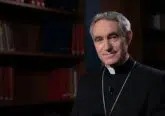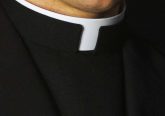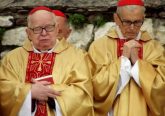Archdiocese of Cincinnati Frequently asked questions regarding the clergy sexual abuse scandal
How do I report the sexual abuse of a minor by a cleric or other representative of the Archdiocese of Cincinnati?
Please report any suspected abuse on the part of any agent of the archdiocese to the appropriate civil authorities, typically the prosecutor’s office in the county in which the alleged abuse occurred.
You may additionally report it to the coordinator of ministry to survivors of abuse in the archdiocese. This can be done by calling 513-263-6623 or 1-800-686-724 ext. 6623 or by submitting a report online.
If you see something, please say something.
What are the roles of the civil authorities and the archdiocese in an investigation of a sexual abuse claim?
The civil authority has sole discretion over its decision to investigate and prosecute an allegation of misconduct. Even if the civil authority should decline to pursue an allegation, the archdiocese will investigate a credible allegation by engaging an experience, independent investigator who carries out an investigation of the accusation.
What policies are in place in the Archdiocese of Cincinnati to provide a safe environment for children and vulnerable adults?
The archdiocese has had policies and directives about child protection in place since 1993, when our Decree on Child Abuse first took effect. When the Decree on Child Abuse was promulgated, the archdiocese made a commitment to evaluate the Decree and its implementation every five years. It was revised and updated in 1998, and the title was changed to the Decree on Child Protection. In 2002, following a widespread revelation of sexual abuse in the Church, the United States Conference of Catholic Bishops (USCCB) developed a Charter for the Protection of Children and Young People and the Decree on Child Protection was again revised in 2003 for consistency with the USCCB Charter. The archdiocese has continued to revise the Decree and adopt the most recent revisions of the Charter from the USCCB. The latest revision of the Decree on Child Protection took effect on July 1, 2018.
In summary, what does the Decree on Child Protection include? The Decree is intended first to prevent abuse of children and adolescents and to provide a system for handling incidents of abuse if they occur. The Decree details the means of educating children, clerics, employees, parents, and volunteers about the realities of abuse. The Decree applies to all archdiocesan or religious parishes, schools, offices, agencies and other institutions, along with any of their sponsored activities, which operate under the administrative authority of the archbishop.
How are archdiocesan personnel trained to prevent and/or recognize abuse?
All priests, deacons, seminarians, consecrated religious, lay people, employees, and volunteers who have contact with minors are required to complete background checks and the Safe Environment training program. This program teaches how to identify signs of misconduct and best practices for making churches, schools and communities safer. Those individuals are expected to help set the standard of behavior and report any misconduct.
Is there outside verification of the archdiocese’s compliance with abuse prevention practices?
The archdiocese participates in the United States Conference of Catholic Bishops (USCCB) annual audit on the Charter for the Protection of Children and Young People. The audit, conducted by an independent firm, reviews prevention and reporting training of both children and adults, as well as background checks for those whose service brings them in contact with children. The auditors research the programs used, the frequency of required training and background checks, and the means of data collection. In addition to the annual audit, an on-site audit is conducted every three years, accompanied by in person interviews of all key diocesan personnel involved with child and youth protection and victim assistance. The archdiocese was found in complete compliance in the 2017 onsite audit and will face another review in the fall of 2020.
How many background checks do we do each year?
We completed approximately 8,800 electronic checks last year. Fingerprints are completed once for the archdiocese and every five years for the Ohio Department of Education.
SELECTION.COM is our third-party background check administrator. Since January 2014, approximately 68,800 people have completed the on-line background check through
SELECTION.COM.
Why do we use a third-party security firm to do the checking?
We use a third party due to their expertise in completing background checks. They are also a FBI/BCI vendor for fingerprinting.
How often do we re-check?
SELECTION.COM completes a quarterly electronic background check on every individual who has completed the electronic check.
What is being done to ensure healthy and well-formed future priests?
The archdiocese is committed to ensuring that the men who will be ordained to the priesthood are indeed suitable for ministry in the church and worthy of the trust of the Catholic faithful. Every applicant to the seminary undergoes a full battery of psychological testing prior to acceptance into the seminary program. Once accepted, the candidate has, at a minimum, four years of formation during which he is taught what he needs to know in order to be a priest. During this time, his disposition, behavior, self-awareness, and stability and goodness of character are also evaluated.
When a man discerns that God might be calling him to the priesthood, the church has a duty to discern that call as well, to make sure he is truly called and of the right character to serve faithfully and well.
How are survivors compensated and supported by the archdiocese?
All who make a substantiated allegation of abuse against a cleric or other representative of the church are offered the compassionate care of the victim assistance coordinator, the pastoral and spiritual support of the church, and counseling assistance with the counselor of their choosing for as long as it is helpful. The church will continue to pay for counseling sessions to support these survivors on their journey of healing.
Has the archdiocese ever opened its files for examination by civil law enforcement?
The archdiocese of Cincinnati turned over all relevant files to a sitting Grand Jury in 2002.
Since that time, by standing protocol, the archdiocese promptly reports any allegation of abuse to the appropriate civil authority in the county in which the alleged abuse occurred.
Has the archdiocese released information on priests and deacons who have been accused of sexual abuse?
The archdiocese lists the names and status of accused clerics with a substantiated allegation, a practice it has followed since 2002. The listing is on the archdiocesan website,
www.catholiccincinnati.com.













